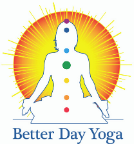
Side-reclining leg lift / Vishnu’s Pose (Sanskrit Term: Anatanasana)
Benefits:
- Strengthens: Quadriceps and pelvic region
- Stretches: Hamstrings, Hip Adductors, Shoulders
- Tones the abdomen and organs in this region, improving their function
- Therapeutic for some back issues
- May prevent hernia
- Improves balance
- Stimulates the solar plexus chakra
Alignment Cues:
Lay on your right side with your right leg straight and right foot flexed as you press through your right heel. Stretch your right arm onto the floor creating a straight line from the stretched, right fingers to the flexed right heel. Bend your right elbow, prop your head up into your right hand, and stretch your right armpit away from the body. Reach up with your left arm and interlace your index and middle fingers around the left foot’s big toe, capping it off with your thumb. Alternatively, you can grab the ball of your foot instead. Inhale and slowly extend the left leg toward the sky as you create resistance with your left hand pulling it back down toward the floor. Feel a deep stretch in the raised leg. Root down firmly through the bottom arm and grounded leg using the outside of the bottom foot to help stabilize.
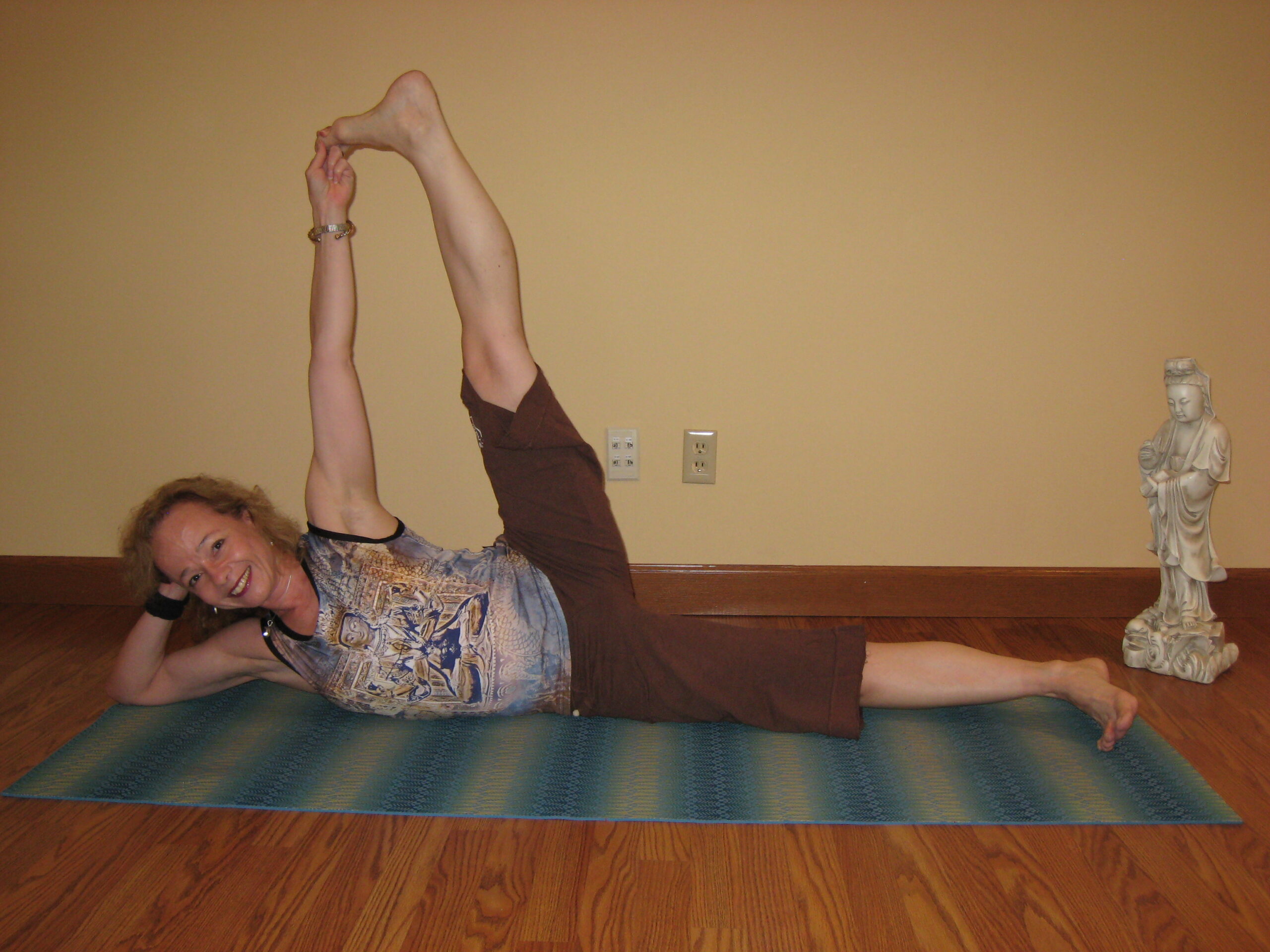
Engage your core to hold the pose. As you hold the pose, it becomes a play of balance to stay on your side. In the opening article, I suggested you shine your light of attention as to why you might feel resistance in a pose to learn more about yourself and your habits. In this pose, you intuitively know how to move to create balance—or not! Have fun with it!
It’s fun to balance isn’t it? It brings out the child in us when we wiggle and perhaps fall. It helps that this pose is close to the ground so we feel safe in our attempts and perhaps more apt to go at it again and again. You might find yourself laughing at your attempts. As mentioned in the opening article, this pose reminds us how applying the fun factor removes the resistance to working with a pose we are having difficulty holding.
You’ll find that it helps to firm your sacrum toward your pelvis to keep the top leg straight up toward the sky to keep from falling out. Engaging the straight leg’s quadriceps helps to stabilize the pose as well as helps to release tight hamstrings and inner thigh muscles. The more stability and strength you can bring to your core (solar plexus chakra), the easier it is to balance in this pose. Think of the effort and attention you bring to this balancing pose as a meditation on calm and stability in the midst of change.
Beginner’s tip: Still unsure on your form or new to yoga? You can try a practice pose.
Add a Prop:
- Press the bottom sole of the foot against a wall to stabilize your body
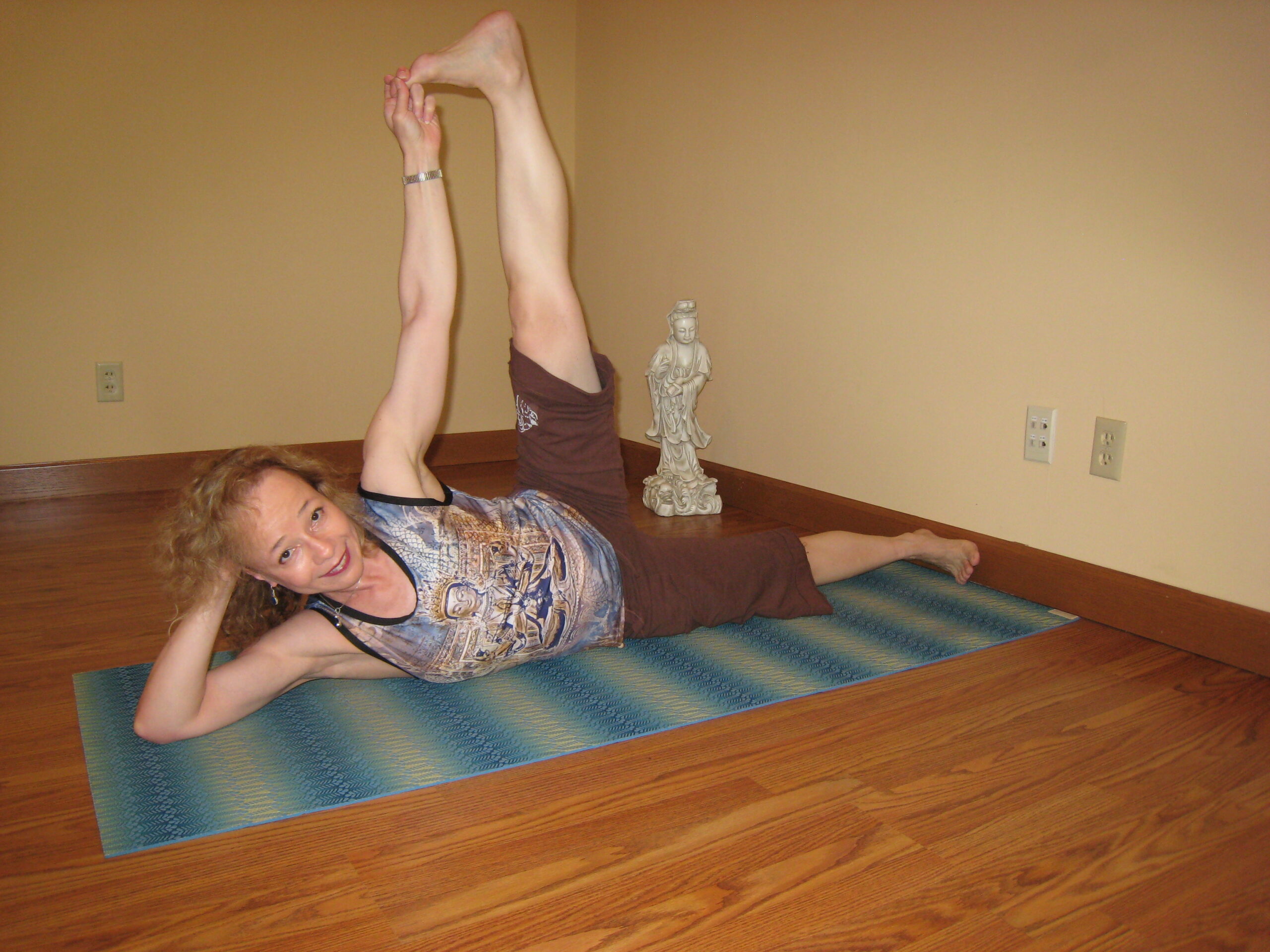
- Add a strap around the ball of the raised foot and hold onto the strap instead of the foot
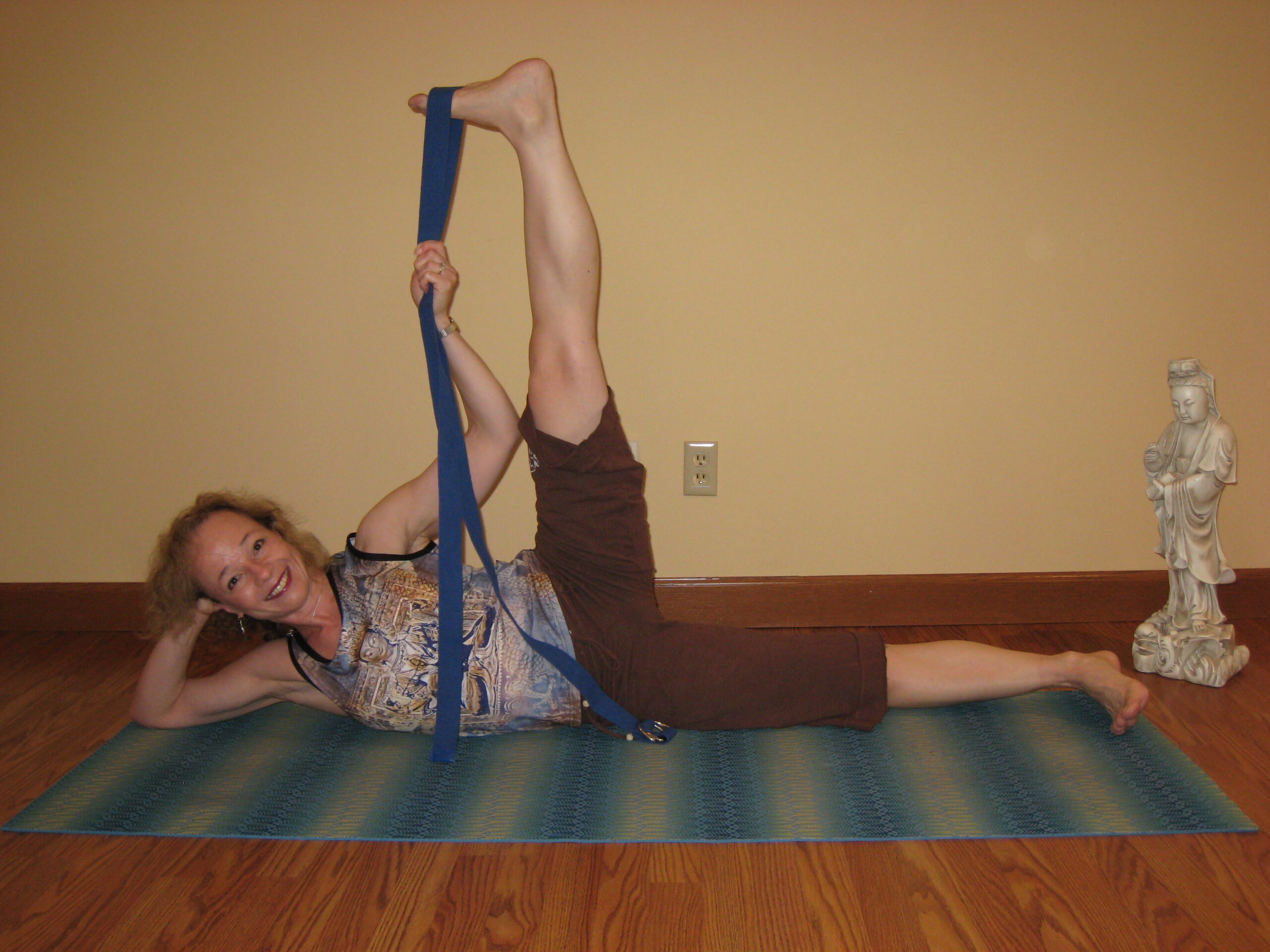
- Add a wedge or bolster against your back if the sole of the foot against the wall is not enough
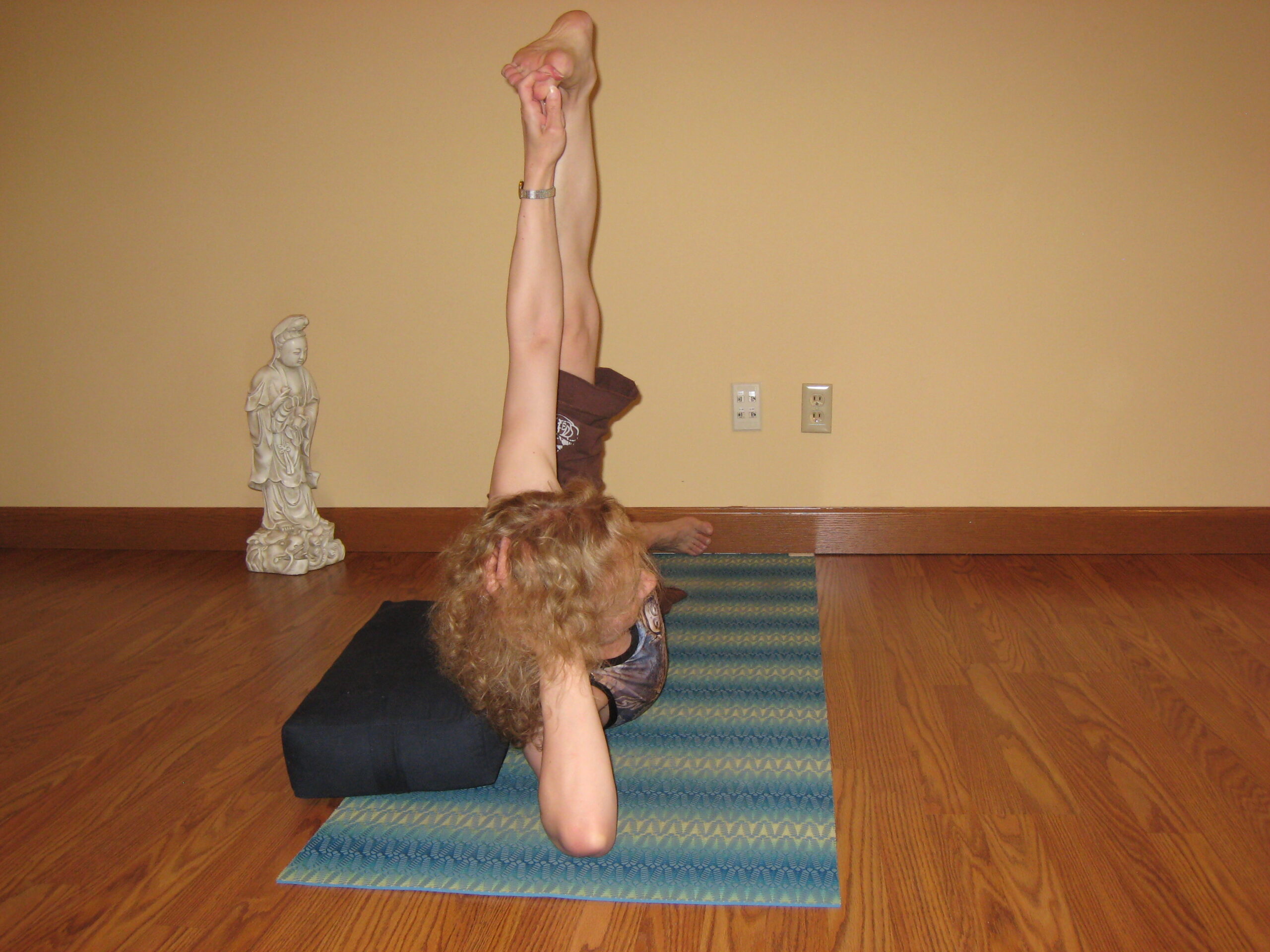
Modifications:
- Bend the bottom knee to widen the base of support
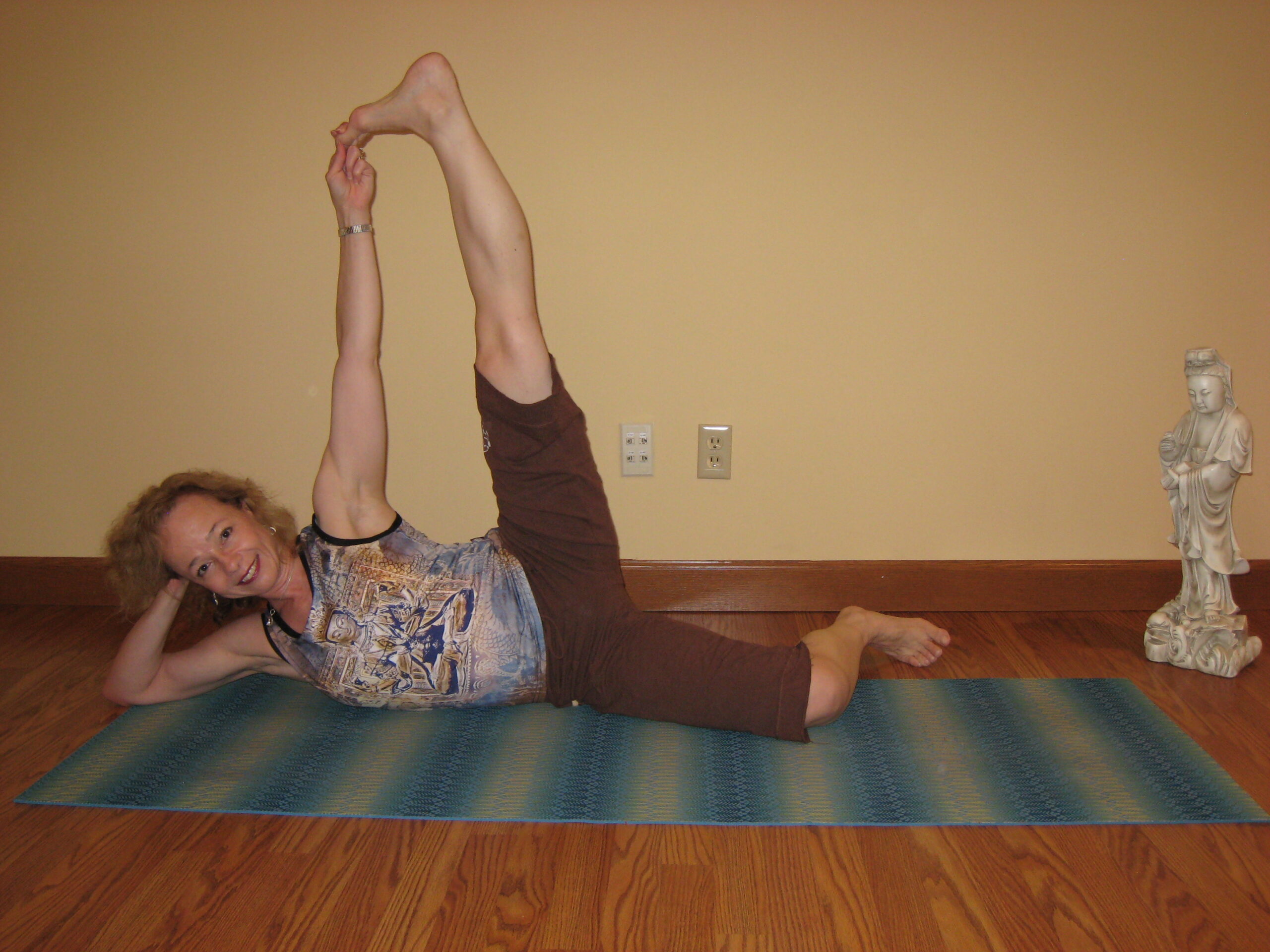
- Move the bottom leg forward
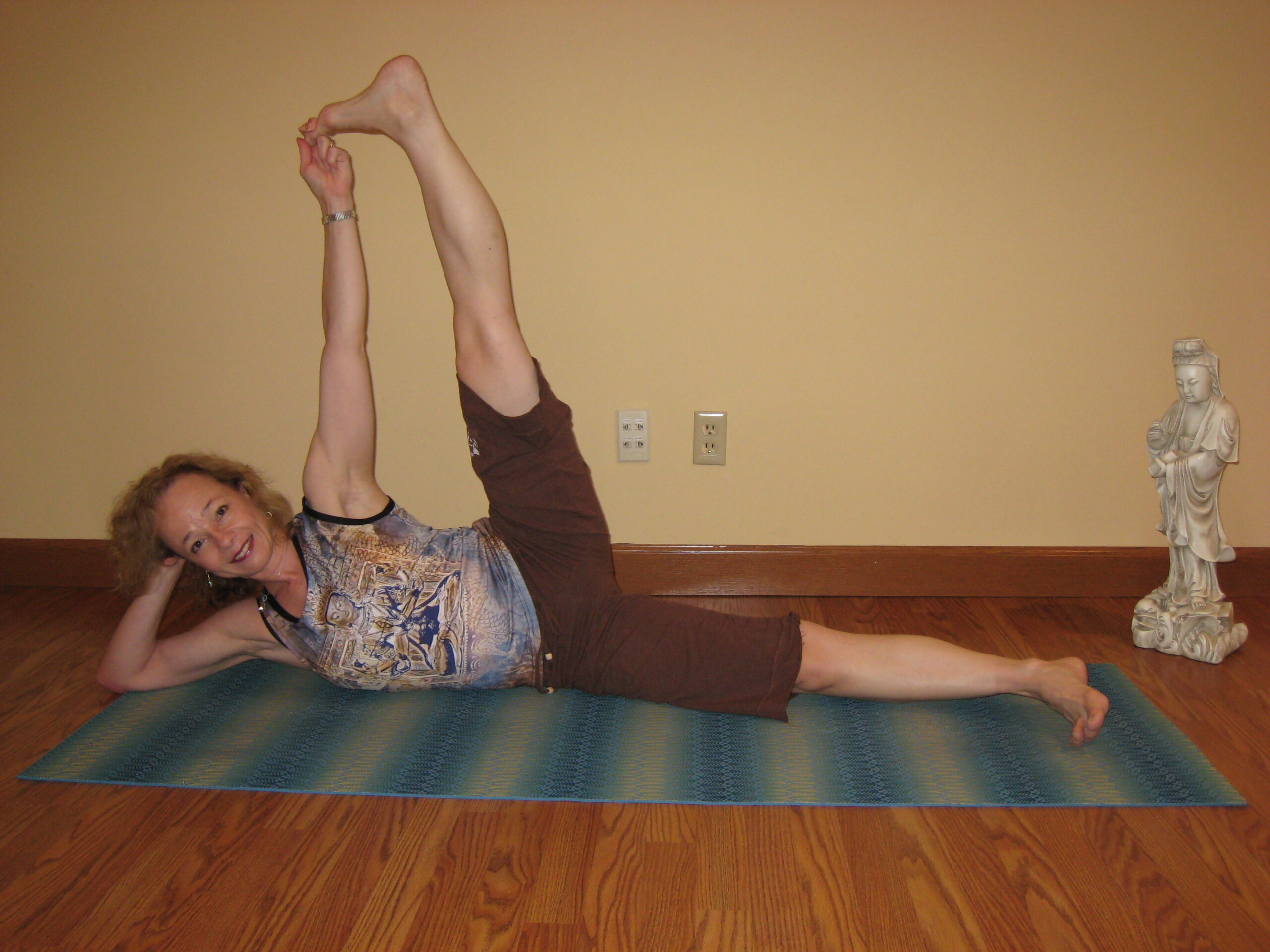
- Bring the head down onto the outstretched bottom arm to decrease the intensity.
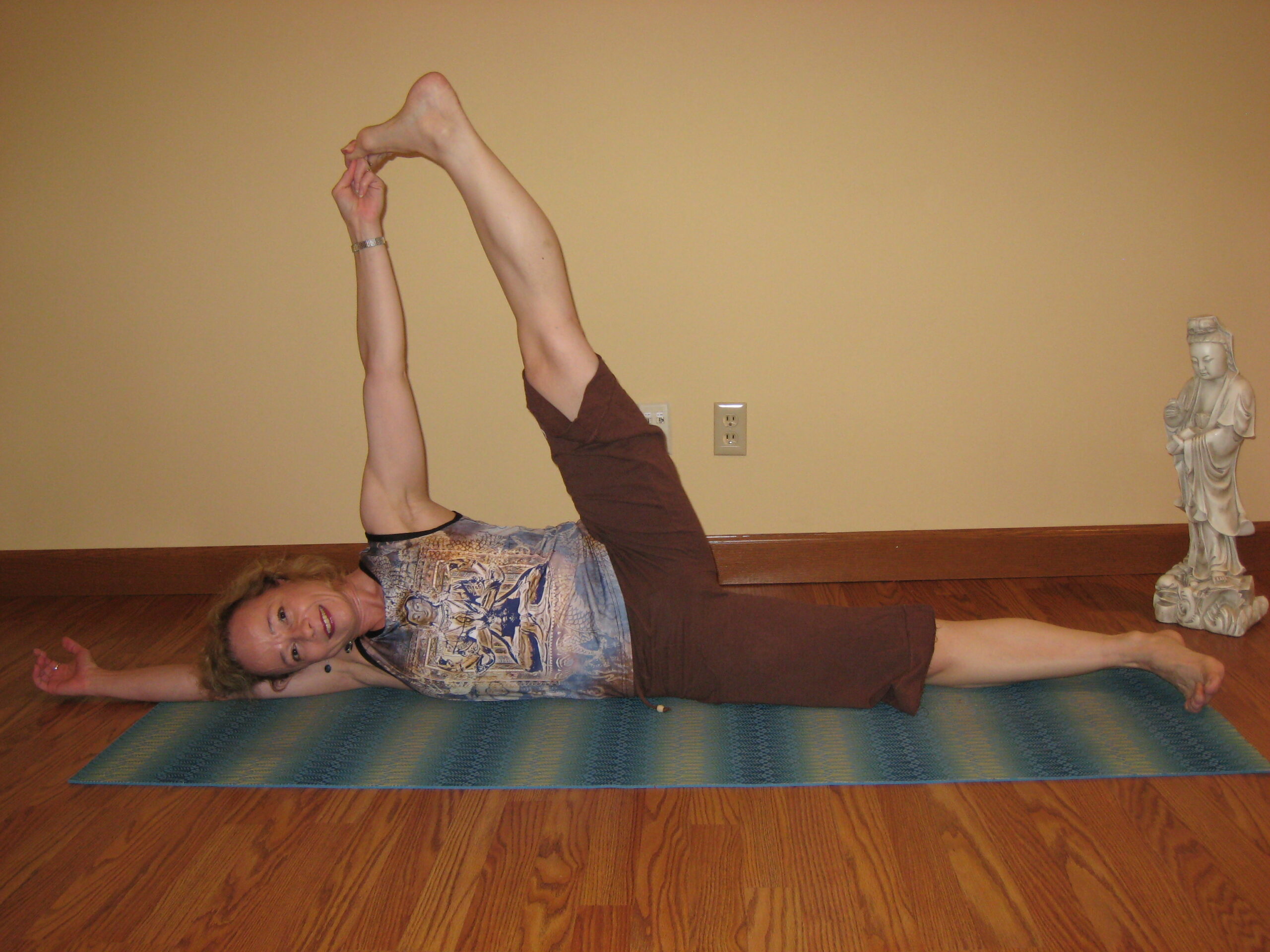
Contraindicated for:
- There are no specific contraindications for this pose. However, always consult your doctor before attempting any pose to rule out any contraindications which may prevent you from doing it.
Sources: YogaJournal.com, Beth Saw’s YogaFIt®
